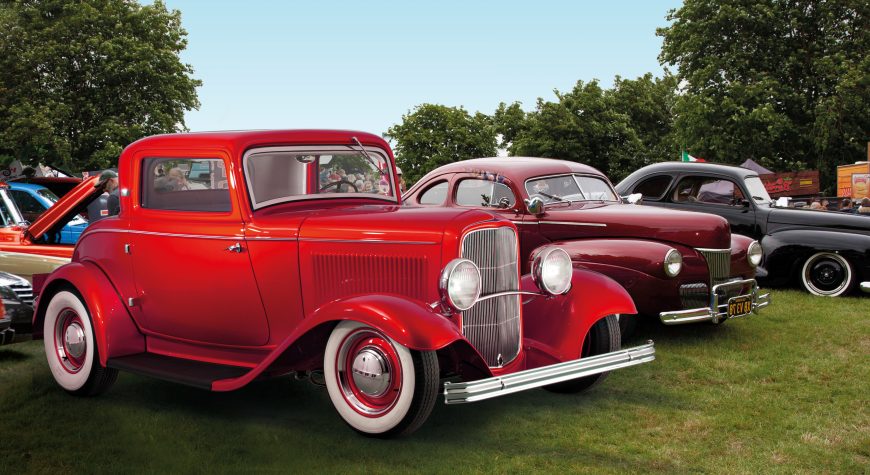A
Auto Express
Guest
If you're looking for a car that offers sporty style for not much cost, then the MG 3 is one of the best-value superminis for sale today. With prices starting from just over £12,000, it's a supermini that's priced like a city car.
While the MG3 was introduced in 2013, it was given a revamp in 2018 with a new nose inspired by the ZS SUV, and an updated interior with an improved infotainment system. This was much-needed, because while the MG3 offers good value, it has some stiff competition to battle against. Price-wise, there are city cars such as the Hyundai i10, Toyota Aygo, Citroen C1 and Peugeot 108 to contend with. These cars are smaller, but not so much as to be ruled out, while they offer decent kit and an enjoyable drive.
In terms of superminis, the MG3 is well behind cars such as the SEAT Ibiza, Ford Fiesta and Skoda Fabia, but these models are more expensive, and you have to settle for a far cheaper variant with less kit if you want to pay a similar amount of money.
Another rival to consider is the cheaper Dacia Sandero - it's more basic than the MG3 inside, especially at the bottom of the range, but it will offer better running costs than the MG3 thanks to its more efficient range of engines.
While the 2018 update improved the interior of the MG3, the mechanical components remained unchanged. That means all cars get a 1.5 VTi Tech four-cylinder petrol engine, a five-speed manual gearbox and front-wheel drive. Unfortunately, the engine is a naturally aspirated unit that makes 105bhp at 6,000rpm and 137Nm of torque at 4,750rpm. This means you need to rev it to make progress, and this impacts fuel economy and emissions as a result - rivals that use smaller turbocharged units are far more economical thanks to the lower revs they use.
The MG3 has a simple model line-up with three versions on offer named Excite, Exclusive and Exclusive Nav.
Don’t think you’re getting a polished, modern supermini, though. It’s not without its merits, but the MG3 is far from a cutting-edge hatchback; it’s rather behind the times in several respects when compared with more established rivals.
The MG3’s suspension has been tuned specifically for UK roads and the chassis was developed by British engineers – all in the name of capturing some of the sports car characteristics for which the company used to be known.
It is indeed good fun to drive. Find a twisty road and the MG3 comes to life; the steering is well weighted and the handling is precise with very little body roll and lots of grip.
The five-speed gearbox has a slick action, and it’s relatively easy to find a comfortable driving position as there’s a decent amount of seat and steering wheel adjustment. It’s not all good news, though, as the trade-off for the car’s agility and sporty handling is a very firm ride; the MG3 thumps over potholes and rough surfaces. The rigid edge to the suspension also causes the car to hop uncomfortably over bumps, which makes it feel rather unsettled.
Given the low price, the MG3 works for those wanting hot hatch-style handling on a tight budget, although the lack of comfort and refinement is a serious drawback.
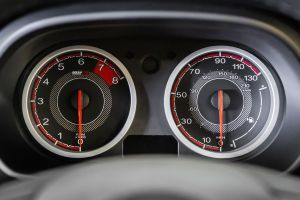
MG3 - speedo
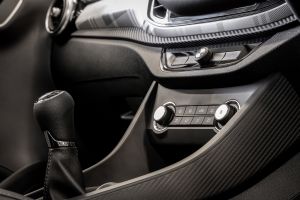
MG3 - buttons
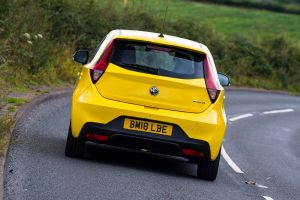
MG3 - rear
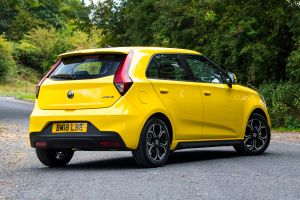
MG3 - rear
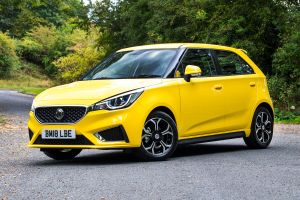
MG3 - front
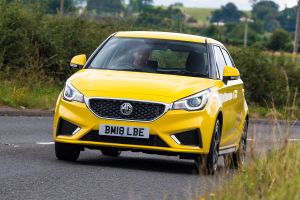
MG3 - front

MG3 - infotainment

MG3 - badge
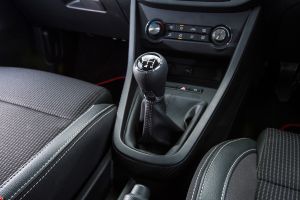
MG3 - gear lever
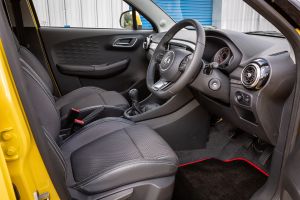
MG3 - interior
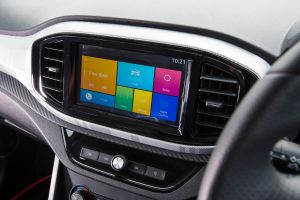
MG3 - infotainment
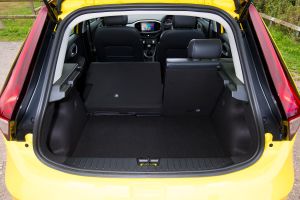
MG3 - boot
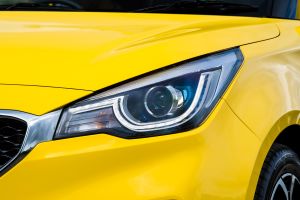
MG3 - headlight
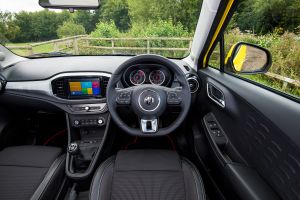
MG3 - interior
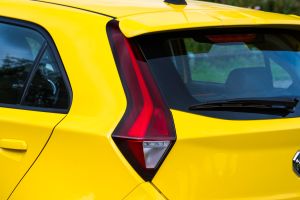
MG3 - taillight
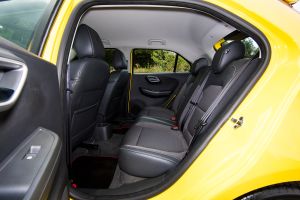
MG3 - back seats
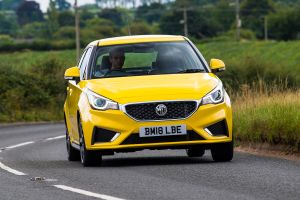
MG3 - front
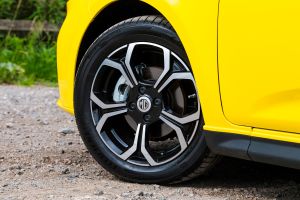
MG3 - wheel
Engines
Worse than the bumpy ride is the dated and outclassed 105bhp 1.5-litre petrol engine. A lot of rival superminis now use low-capacity petrol turbos, which typically offer a good blend of power and economy, but MG has stuck with a rather old-fashioned naturally aspirated unit, which doesn’t really score on either count.
You have to push the engine very hard to get much out of it, and all the power is right at the top of the rev range, so you need to really work the gearbox and the rather spongy accelerator pedal to achieve any meaningful performance. The MG3 claims a 0-62mph sprint time of 10.4 seconds, which isn’t bad for a cheap supermini, although the pace doesn’t really match the agile handling – and the need to floor it all the time becomes a drag on the motorway.
As the MG3 is only available with a single, old-fashioned petrol engine, it’s no great surprise that fuel efficiency and CO2 emissions lag behind those of rivals. Official fuel economy stands at 42.3mpg and it emits 152g/km.
Most competitors have far superior fuel economy, though, as do many larger and more expensive cars, for that matter. And that’s if you achieve the economy figures that MG claims; in mixed driving conditions when we tested the pre-facelift MG3, we returned only around 35mpg in the car.
The MG3 doesn’t have any technology to help improve its efficiency, either; there’s no stop/start system, low-rolling-resistance tyres or brake energy recovery, for example. While these features don’t necessarily come as standard on every other new supermini, it isn’t hard to find rivals (albeit more expensive ones) with them – and significantly lower running costs as a result.
Insurance groups
Insurance premiums for the MG3 should be fairly cheap as all models sit in groups 7 or 8. The Dacia Sandero does come in a few groups lower, but it is an extremely basic car.
Top-spec cars retain around 38% of their value after 3 years and 36,000 miles, but the super-cheap entry level car should hold onto about 42%. That emphasises that the saving grace for this car is its low list price, which means that even if it does lose proportionately more value than rivals, there’s less money to shed in the first place.
First impressions count, and the neatly designed, five-door-only MG3 doesn’t look like a budget car. The styling is attractive and it’s well proportioned, so it stands out much more than rivals such as the anonymous Dacia Sandero and much more common superminis like the Ford Fiesta, Vauxhall Corsa or Volkswagen Polo.
Neat details include the high-mounted tail-lamps, LED daytime running lights and curved A-pillars, which are similar in appearance to the MINI hatchback’s. The long wheelbase and short overhangs also give the MG3 a sporty stance on the road. Plus, you can have fun picking from a wide range of personalisation options, including bold decals, colourful door mirror covers and lots of wheel choices – although adding extras will affect the overall price.
Inside, the car is equally stylish and a little more individual than most conventional supermini cabins. The seats are also supportive and comfortable – not quite enough to offset the hard, bumpy ride, but they do the job well. The addition of the 8-inch touchscreen also adds a touch of upmarket appeal, too.
Sadly, cheap materials and inconsistent build quality undo this initial good impression. The plastics are hard and low rent, the switches are flimsy and the small buttons on the stereo and air-conditioning controls are fiddly. So while the appealing looks and youthful customisation options are a strong point for the MG, the poor cabin lets the side down.

MG3 - speedo

MG3 - buttons

MG3 - rear

MG3 - rear

MG3 - front

MG3 - front

MG3 - infotainment

MG3 - badge

MG3 - gear lever

MG3 - interior

MG3 - infotainment

MG3 - boot

MG3 - headlight

MG3 - interior

MG3 - taillight

MG3 - back seats

MG3 - front

MG3 - wheel
Sat-nav, stereo and infotainment
Even though the MG3 feels cheap inside, the generous equipment tally helps to compensate; you certainly get a lot for your money. The entry-level MG3 Excite comes with Bluetooth, Apple CarPlay smartphone integration, USB and aux inputs, plus all-round electric windows, on top of the LED daytime running lights.
The next model up, the MG3 Exclusive, also looks good value, as it includes sports seats, cruise control, a reversing camera and an upgraded six-speaker audio system.
If you want a spacious five-seat supermini that costs around £12,000, the MG3 is well worth looking at. The cabin is packed with lots of handy storage, including decent-sized door bins, a big glovebox and a lidded cubbyhole on top of the dashboard.
Size
At 4,018mm long, 1,729mm wide and 1,507mm tall, the MG3 is relatively compact, especially when you consider the amount of space inside. It’s smaller in every respect than its chief rival, the Dacia Sandero, but then that car is large for a supermini.
The MG is bigger than the Ford Fiesta, which is the best seller in its class, and ever so slightly smaller than the Vauxhall Corsa, but of course both these cars are more expensive to buy. It’s also a lot larger inside than similarly priced models from the smaller city car segment, while top-of-the-range versions come with useful parking sensors.
The MG offers generous rear legroom, while access to the back seats is boosted by the five-door-only layout. Many supermini rivals are available in three or five-door bodystyles, with the latter usually carrying a price premium. MG also includes electric rear windows as standard with all models.
Boot
If it weren’t for the Dacia Sandero, which has a huge 320-litre boot, the MG3 would have the edge in this class on luggage space for the money. It offers a 285-litre load bay, which falls between those of the Vauxhall Corsa and Ford Fiesta – they provide five litres more and five litres less space respectively. But again, you have to remember that the MG costs quite a bit less to buy than either of these rivals.
Fold the rear seats flat (they split in a 60:40 configuration), and the luggage capacity increases to 1,262 litres, which is streets ahead of the Corsa and the Fiesta, and also 62 litres more than in the Dacia Sandero – so that’s worth remembering if you plan to use the extra space. The downside is that you lose 29 litres if you go for the space saver spare wheel option in the MG.
MG has achieved a decent level of success in a relatively short time period. The manufacturer finished in 20th position out of 30 brands in our latest Driver Power customer satisfaction survey - an improvement from 27th place in 2019.
The MG3 finished 10th overall when it first appeared in the 2015 Driver Power list, although in 2020 had dropped down to 74th spot - a sign that a fresh model may well be needed.
The MG3 is also behind the pack when it comes to safety. A Euro NCAP crash test rating of three stars is a concern; especially as it was tested in 2014, when the test wasn't as tough as it is today, and many rivals achieve five stars nowadays.
The fact that six airbags, stability control, hill hold assist and tyre pressure monitoring come as standard does little to offset worries about the MG3’s crash safety failings, and it seems that there’s more to the apparently poor build quality and cheap-feeling materials inside the car than meets the eye. For example, the MG3 scored 20 fewer points in the adult crash protection test than the Skoda Citigo, which is a much smaller car.

MG3 - speedo

MG3 - buttons

MG3 - rear

MG3 - rear

MG3 - front

MG3 - front

MG3 - infotainment

MG3 - badge

MG3 - gear lever

MG3 - interior

MG3 - infotainment

MG3 - boot

MG3 - headlight

MG3 - interior

MG3 - taillight

MG3 - back seats

MG3 - front

MG3 - wheel
Warranty
MG is trying to attract buyers with a seven-year/80,000-mile warranty. That’s matched by Kia in terms of time, but the Korean maker has a 100,000-mile limit. Either way, the MG3 has a far longer warranty period than cars like the Hyundai i10 and Hyundai i20 with five-year/unlimited-mileage cover - or most European models, which have three years of warranty. MG also only offers 12 months' breakdown cover.
Servicing
MG offers service plans that allow customers to spread the cost of their servicing by paying a monthly direct debit. If you wish, you can also pay for a service plan upfront in full.
For an alternative review of the latest MG3 Hatchback visit our sister site carbuyer.co.uk
Continue reading...
While the MG3 was introduced in 2013, it was given a revamp in 2018 with a new nose inspired by the ZS SUV, and an updated interior with an improved infotainment system. This was much-needed, because while the MG3 offers good value, it has some stiff competition to battle against. Price-wise, there are city cars such as the Hyundai i10, Toyota Aygo, Citroen C1 and Peugeot 108 to contend with. These cars are smaller, but not so much as to be ruled out, while they offer decent kit and an enjoyable drive.
- SEE MORE Best superminis 2020
In terms of superminis, the MG3 is well behind cars such as the SEAT Ibiza, Ford Fiesta and Skoda Fabia, but these models are more expensive, and you have to settle for a far cheaper variant with less kit if you want to pay a similar amount of money.
Another rival to consider is the cheaper Dacia Sandero - it's more basic than the MG3 inside, especially at the bottom of the range, but it will offer better running costs than the MG3 thanks to its more efficient range of engines.
While the 2018 update improved the interior of the MG3, the mechanical components remained unchanged. That means all cars get a 1.5 VTi Tech four-cylinder petrol engine, a five-speed manual gearbox and front-wheel drive. Unfortunately, the engine is a naturally aspirated unit that makes 105bhp at 6,000rpm and 137Nm of torque at 4,750rpm. This means you need to rev it to make progress, and this impacts fuel economy and emissions as a result - rivals that use smaller turbocharged units are far more economical thanks to the lower revs they use.
The MG3 has a simple model line-up with three versions on offer named Excite, Exclusive and Exclusive Nav.
Don’t think you’re getting a polished, modern supermini, though. It’s not without its merits, but the MG3 is far from a cutting-edge hatchback; it’s rather behind the times in several respects when compared with more established rivals.
The MG3’s suspension has been tuned specifically for UK roads and the chassis was developed by British engineers – all in the name of capturing some of the sports car characteristics for which the company used to be known.
It is indeed good fun to drive. Find a twisty road and the MG3 comes to life; the steering is well weighted and the handling is precise with very little body roll and lots of grip.
The five-speed gearbox has a slick action, and it’s relatively easy to find a comfortable driving position as there’s a decent amount of seat and steering wheel adjustment. It’s not all good news, though, as the trade-off for the car’s agility and sporty handling is a very firm ride; the MG3 thumps over potholes and rough surfaces. The rigid edge to the suspension also causes the car to hop uncomfortably over bumps, which makes it feel rather unsettled.
Given the low price, the MG3 works for those wanting hot hatch-style handling on a tight budget, although the lack of comfort and refinement is a serious drawback.

MG3 - speedo

MG3 - buttons

MG3 - rear

MG3 - rear

MG3 - front

MG3 - front

MG3 - infotainment

MG3 - badge

MG3 - gear lever

MG3 - interior

MG3 - infotainment

MG3 - boot

MG3 - headlight

MG3 - interior

MG3 - taillight

MG3 - back seats

MG3 - front

MG3 - wheel
Engines
Worse than the bumpy ride is the dated and outclassed 105bhp 1.5-litre petrol engine. A lot of rival superminis now use low-capacity petrol turbos, which typically offer a good blend of power and economy, but MG has stuck with a rather old-fashioned naturally aspirated unit, which doesn’t really score on either count.
- SEE MORE MG3 vs Skoda Fabia
You have to push the engine very hard to get much out of it, and all the power is right at the top of the rev range, so you need to really work the gearbox and the rather spongy accelerator pedal to achieve any meaningful performance. The MG3 claims a 0-62mph sprint time of 10.4 seconds, which isn’t bad for a cheap supermini, although the pace doesn’t really match the agile handling – and the need to floor it all the time becomes a drag on the motorway.
As the MG3 is only available with a single, old-fashioned petrol engine, it’s no great surprise that fuel efficiency and CO2 emissions lag behind those of rivals. Official fuel economy stands at 42.3mpg and it emits 152g/km.
Most competitors have far superior fuel economy, though, as do many larger and more expensive cars, for that matter. And that’s if you achieve the economy figures that MG claims; in mixed driving conditions when we tested the pre-facelift MG3, we returned only around 35mpg in the car.
The MG3 doesn’t have any technology to help improve its efficiency, either; there’s no stop/start system, low-rolling-resistance tyres or brake energy recovery, for example. While these features don’t necessarily come as standard on every other new supermini, it isn’t hard to find rivals (albeit more expensive ones) with them – and significantly lower running costs as a result.
Insurance groups
Insurance premiums for the MG3 should be fairly cheap as all models sit in groups 7 or 8. The Dacia Sandero does come in a few groups lower, but it is an extremely basic car.
- SEE MORE Best car insurance companies
Top-spec cars retain around 38% of their value after 3 years and 36,000 miles, but the super-cheap entry level car should hold onto about 42%. That emphasises that the saving grace for this car is its low list price, which means that even if it does lose proportionately more value than rivals, there’s less money to shed in the first place.
First impressions count, and the neatly designed, five-door-only MG3 doesn’t look like a budget car. The styling is attractive and it’s well proportioned, so it stands out much more than rivals such as the anonymous Dacia Sandero and much more common superminis like the Ford Fiesta, Vauxhall Corsa or Volkswagen Polo.
Neat details include the high-mounted tail-lamps, LED daytime running lights and curved A-pillars, which are similar in appearance to the MINI hatchback’s. The long wheelbase and short overhangs also give the MG3 a sporty stance on the road. Plus, you can have fun picking from a wide range of personalisation options, including bold decals, colourful door mirror covers and lots of wheel choices – although adding extras will affect the overall price.
Inside, the car is equally stylish and a little more individual than most conventional supermini cabins. The seats are also supportive and comfortable – not quite enough to offset the hard, bumpy ride, but they do the job well. The addition of the 8-inch touchscreen also adds a touch of upmarket appeal, too.
Sadly, cheap materials and inconsistent build quality undo this initial good impression. The plastics are hard and low rent, the switches are flimsy and the small buttons on the stereo and air-conditioning controls are fiddly. So while the appealing looks and youthful customisation options are a strong point for the MG, the poor cabin lets the side down.

MG3 - speedo

MG3 - buttons

MG3 - rear

MG3 - rear

MG3 - front

MG3 - front

MG3 - infotainment

MG3 - badge

MG3 - gear lever

MG3 - interior

MG3 - infotainment

MG3 - boot

MG3 - headlight

MG3 - interior

MG3 - taillight

MG3 - back seats

MG3 - front

MG3 - wheel
Sat-nav, stereo and infotainment
Even though the MG3 feels cheap inside, the generous equipment tally helps to compensate; you certainly get a lot for your money. The entry-level MG3 Excite comes with Bluetooth, Apple CarPlay smartphone integration, USB and aux inputs, plus all-round electric windows, on top of the LED daytime running lights.
The next model up, the MG3 Exclusive, also looks good value, as it includes sports seats, cruise control, a reversing camera and an upgraded six-speaker audio system.
If you want a spacious five-seat supermini that costs around £12,000, the MG3 is well worth looking at. The cabin is packed with lots of handy storage, including decent-sized door bins, a big glovebox and a lidded cubbyhole on top of the dashboard.
Size
At 4,018mm long, 1,729mm wide and 1,507mm tall, the MG3 is relatively compact, especially when you consider the amount of space inside. It’s smaller in every respect than its chief rival, the Dacia Sandero, but then that car is large for a supermini.
The MG is bigger than the Ford Fiesta, which is the best seller in its class, and ever so slightly smaller than the Vauxhall Corsa, but of course both these cars are more expensive to buy. It’s also a lot larger inside than similarly priced models from the smaller city car segment, while top-of-the-range versions come with useful parking sensors.
- SEE MORE Best small cars to buy in 2020
The MG offers generous rear legroom, while access to the back seats is boosted by the five-door-only layout. Many supermini rivals are available in three or five-door bodystyles, with the latter usually carrying a price premium. MG also includes electric rear windows as standard with all models.
Boot
If it weren’t for the Dacia Sandero, which has a huge 320-litre boot, the MG3 would have the edge in this class on luggage space for the money. It offers a 285-litre load bay, which falls between those of the Vauxhall Corsa and Ford Fiesta – they provide five litres more and five litres less space respectively. But again, you have to remember that the MG costs quite a bit less to buy than either of these rivals.
Fold the rear seats flat (they split in a 60:40 configuration), and the luggage capacity increases to 1,262 litres, which is streets ahead of the Corsa and the Fiesta, and also 62 litres more than in the Dacia Sandero – so that’s worth remembering if you plan to use the extra space. The downside is that you lose 29 litres if you go for the space saver spare wheel option in the MG.
MG has achieved a decent level of success in a relatively short time period. The manufacturer finished in 20th position out of 30 brands in our latest Driver Power customer satisfaction survey - an improvement from 27th place in 2019.
The MG3 finished 10th overall when it first appeared in the 2015 Driver Power list, although in 2020 had dropped down to 74th spot - a sign that a fresh model may well be needed.
The MG3 is also behind the pack when it comes to safety. A Euro NCAP crash test rating of three stars is a concern; especially as it was tested in 2014, when the test wasn't as tough as it is today, and many rivals achieve five stars nowadays.
The fact that six airbags, stability control, hill hold assist and tyre pressure monitoring come as standard does little to offset worries about the MG3’s crash safety failings, and it seems that there’s more to the apparently poor build quality and cheap-feeling materials inside the car than meets the eye. For example, the MG3 scored 20 fewer points in the adult crash protection test than the Skoda Citigo, which is a much smaller car.

MG3 - speedo

MG3 - buttons

MG3 - rear

MG3 - rear

MG3 - front

MG3 - front

MG3 - infotainment

MG3 - badge

MG3 - gear lever

MG3 - interior

MG3 - infotainment

MG3 - boot

MG3 - headlight

MG3 - interior

MG3 - taillight

MG3 - back seats

MG3 - front

MG3 - wheel
Warranty
MG is trying to attract buyers with a seven-year/80,000-mile warranty. That’s matched by Kia in terms of time, but the Korean maker has a 100,000-mile limit. Either way, the MG3 has a far longer warranty period than cars like the Hyundai i10 and Hyundai i20 with five-year/unlimited-mileage cover - or most European models, which have three years of warranty. MG also only offers 12 months' breakdown cover.
Servicing
MG offers service plans that allow customers to spread the cost of their servicing by paying a monthly direct debit. If you wish, you can also pay for a service plan upfront in full.
For an alternative review of the latest MG3 Hatchback visit our sister site carbuyer.co.uk
Continue reading...


